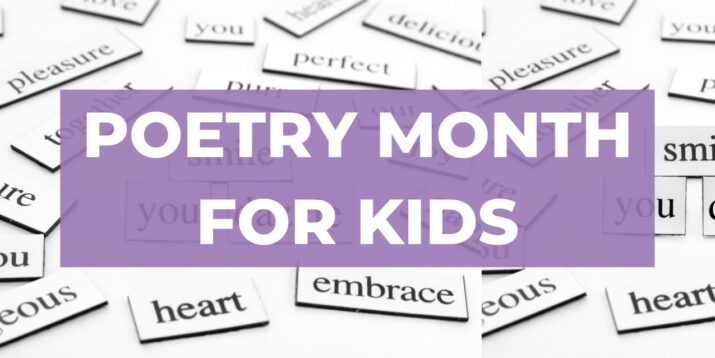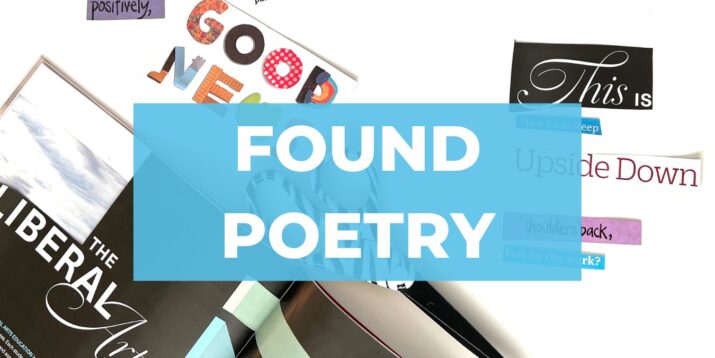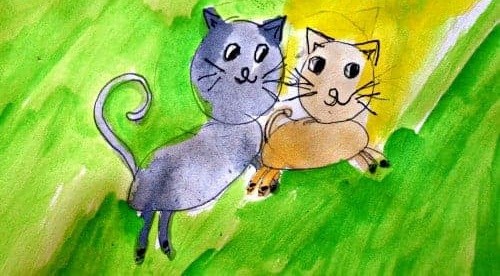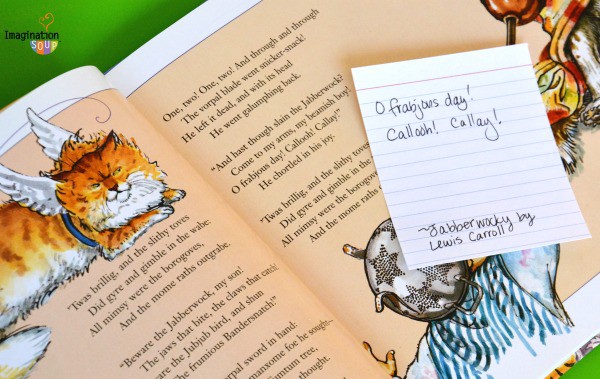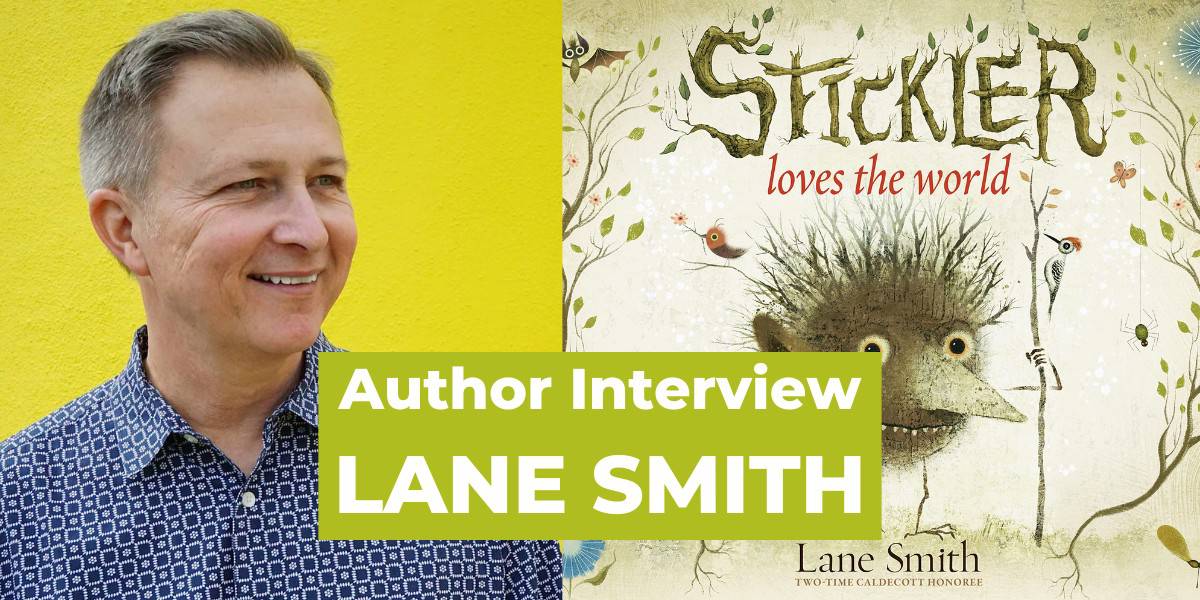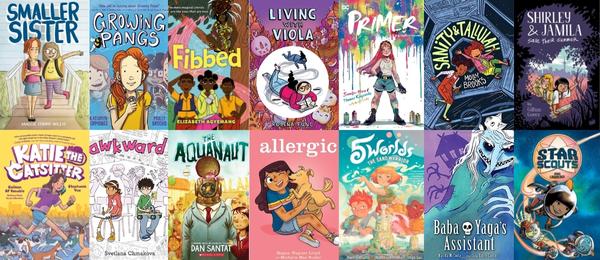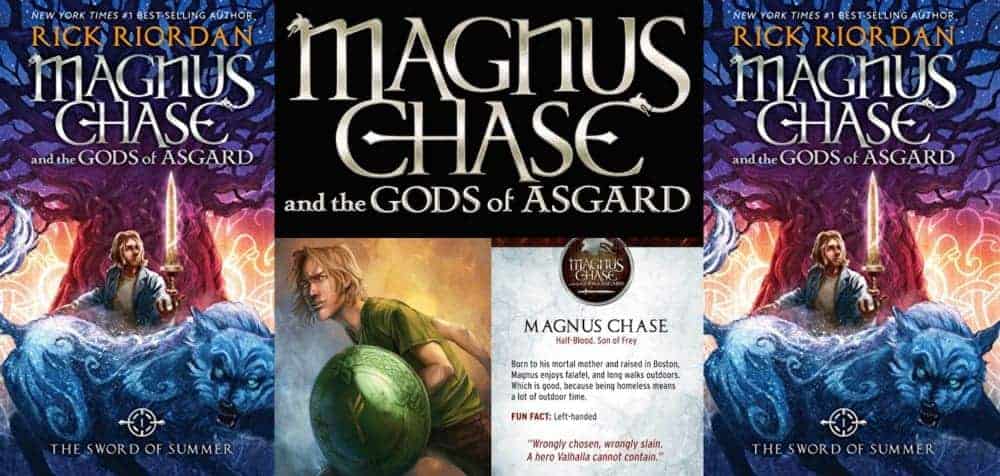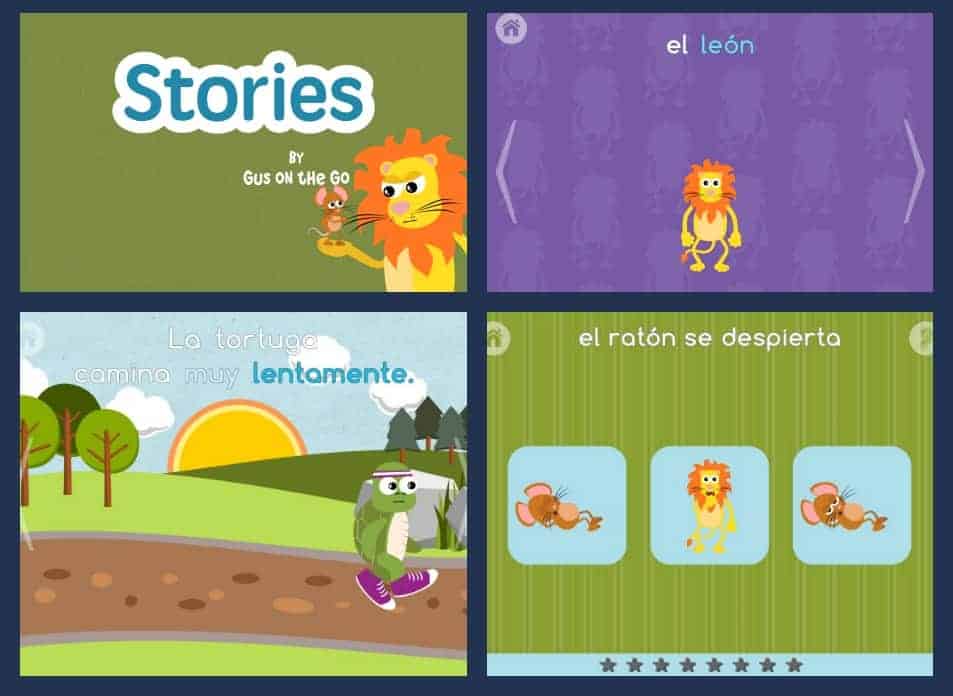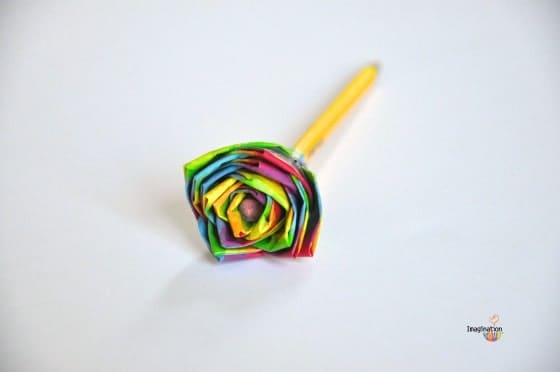50 Best Poetry Books for Children
This post may contain affiliate links.
Start reading poetry books with children to introduce them to good poems and lyrical language, wordplay, sensory images, and rhyme. Moreover, exposing children to poems helps them grow to love poetry –which can become a lifelong interest. I find so much solace and comfort in poetry as an adult and I hope that with these favorite poetry books for kids, you and I can pass that love along to children.
So what are the best nonfiction poetry books for children appropriate for homes and classrooms?
Get excited because I’m about to share a wealth of good poems for kids! These are poetry books you can use in the classroom or at home. I’ve done both. I also recommend that you read poetry frequently– not just in April for Poetry Month.
“A poem is a cup of words open to the sky and wind in a bucket.” – Naomi Shihab Nye.
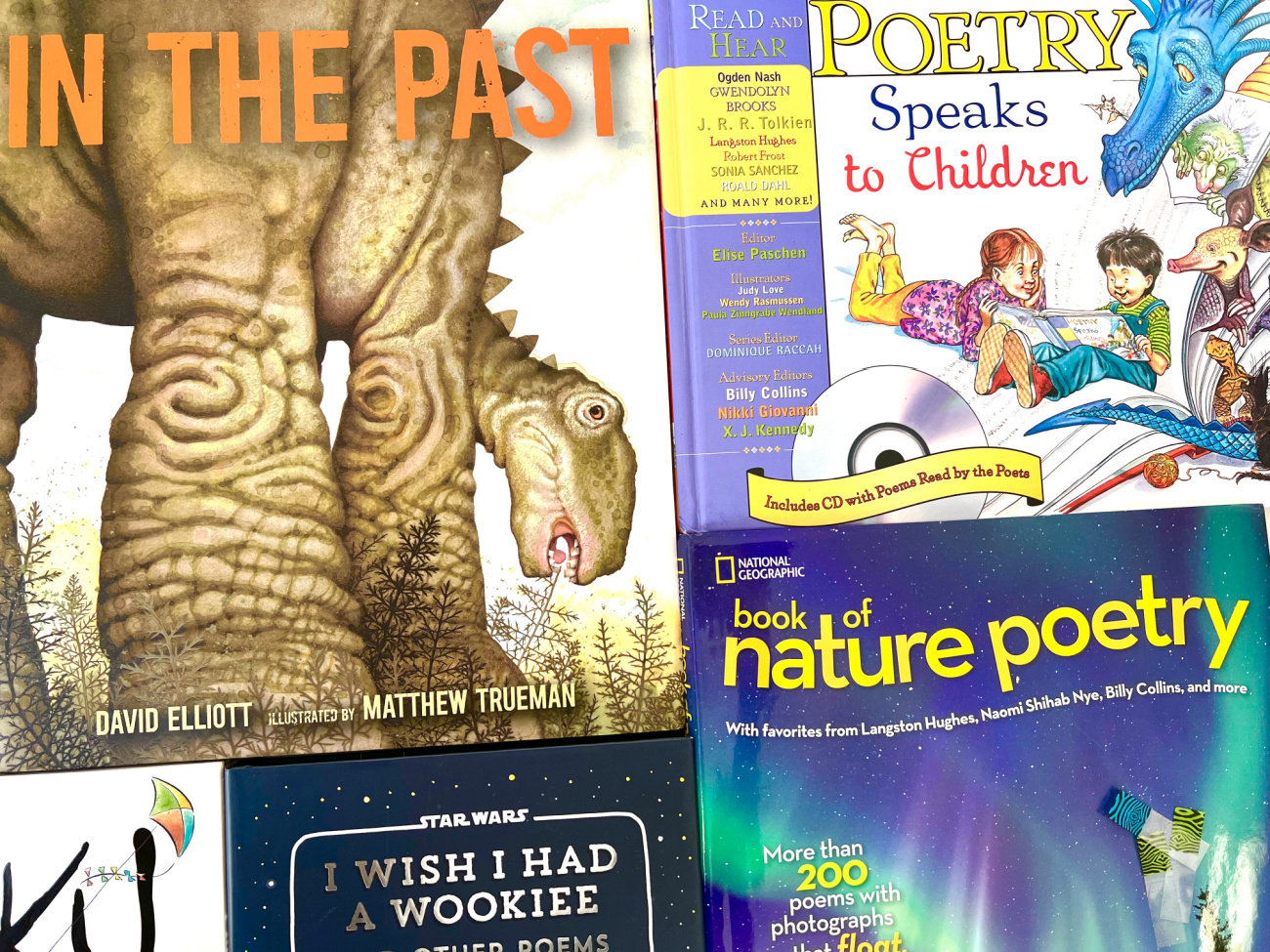
But first, when should you start reading poetry with kids?
Children can read poetry at a young age. You can start with toddlers.
Remember that nursery rhymes are poems, too! So, chanting about how the cow jumped over the moon is a great introduction to poetry. Continue reading poetry to your preschoolers and elementary-age children or students throughout the year.
But, if you only remember during National Poetry Month (that’s in April,) that’s a great time to read nonfiction poetry books as well.
“Listen to words and sentences. What kind of music do they have?” – Marilyn Singer
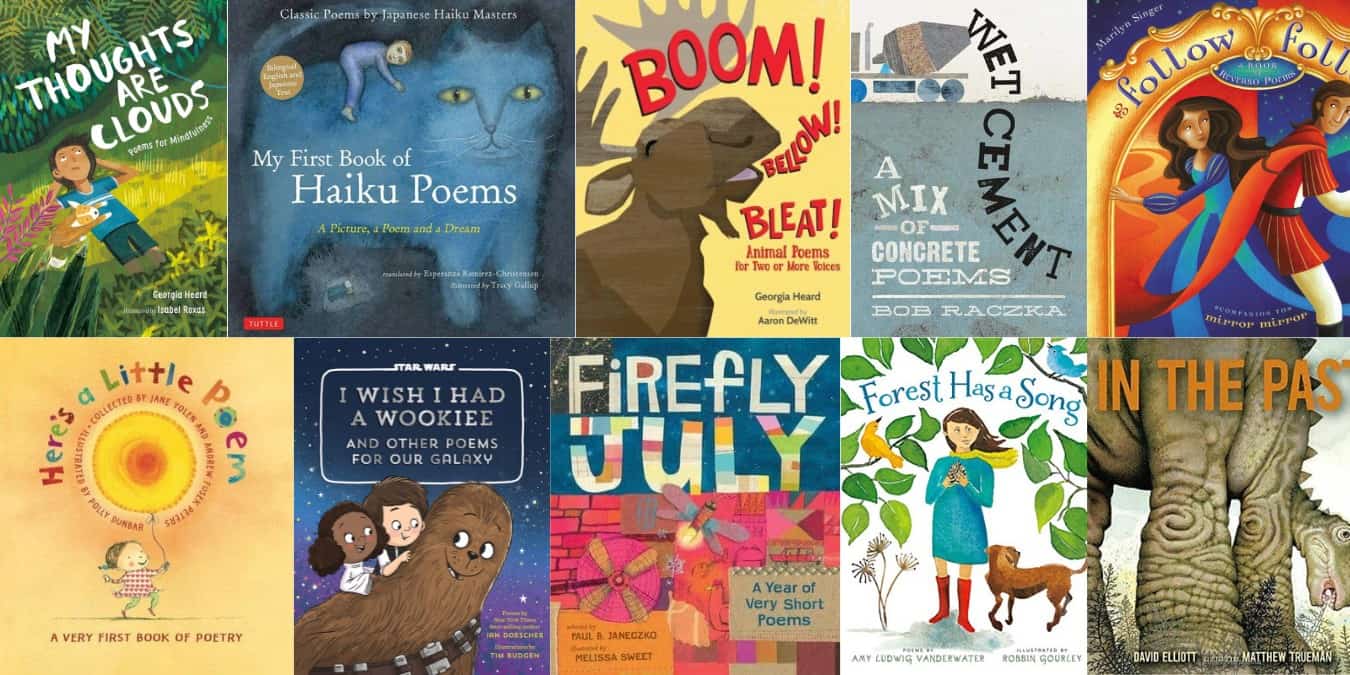
What poems for kids do children like?
Most young children love funny poems the most. So, start with humorous poems. Silly poems are a wonderful introduction to poetry and a gateway into riddles.
As a child’s brain develops, their ability to understand more abstract, symbolic poetry will grow. After funny poetry, move on to nature poetry. Young kids easily connect to nature; poetry is a great way to cultivate a deeper appreciation of the natural world.
“One needn’t ask hundreds of questions about poems, nor dissect or analyze them to death. Just read poetry, love it to pieces, and enjoy it to the fullest.” – Lee Bennett Hopkins
Why is reading and writing poetry important?
“Writing a poem is making music with words and space.” – Arnold Adoff
Poems resonate with emotions we often can’t express in other ways; they speak truth powerfully in a hidden message sort of way. Writing poetry can often be a powerful tool for expressing these complicated emotions.
When you read poetry, see if you can notice how the poets express their feelings. Then ask yourself, how can you do that in your poetry? Self-expression is one of the benefits of writing poetry for poets of all ages.
Conditions for real writing:
1) Personal (choice)
2) Interpersonal (social)
3) Time/space to do quality work
4) Pay-off (purpose/feedback)
– Ralph Fletcher
Even better for reluctant or early writers, poems don’t have to be complete sentences. I think these lower stakes help kids get more writing done!
“Poems are other people’s snapshots in which we see our own lives.” – Charles Simic
Read the poems out loud!
Finally, poems are meant to be read out loud. So, read them out loud! And read them more than once.
You’ll find new understandings of each poem when you listen to it. Especially more than once.
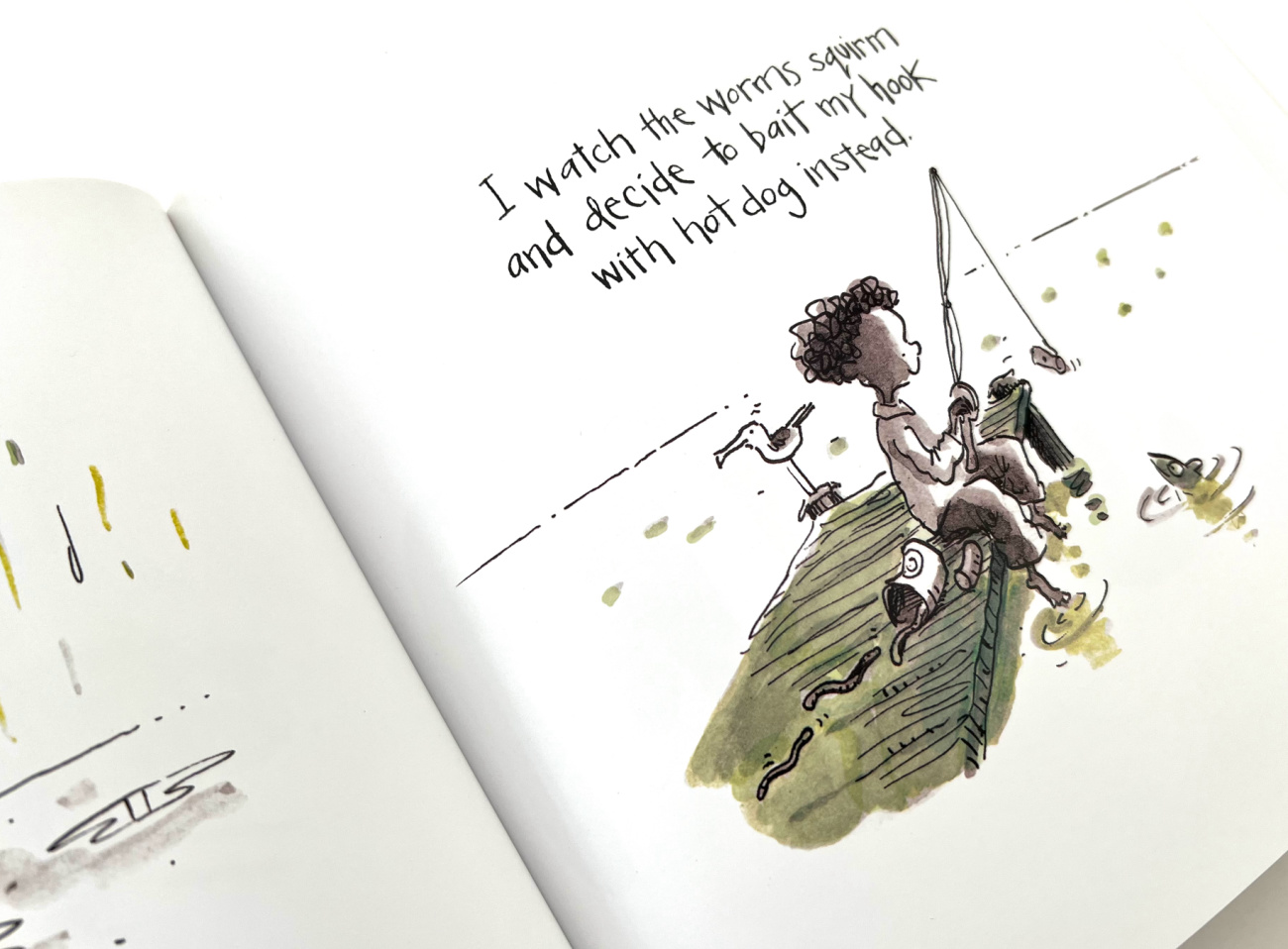
“I have always believed that poems beg to be read aloud, even if the reader is in a world all her own.” – J. Patrick Lewis
Download a free PDF book list of these best poetry books for kids!
50 Best Poetry Books for Children
Shape Poems

Wet Cement A Mix of Concrete Poems by Bob Raczka
Shape poems paint a picture on the page — and these do an amazing job. The Hanger shape poem is shaped like a hanger; dominoes are shaped just like falling dominoes with fun texts about pushing single file down the row. I love the Corners poem about a hungry mouse looking for cheese that is shaped like a maze.
Short Poems
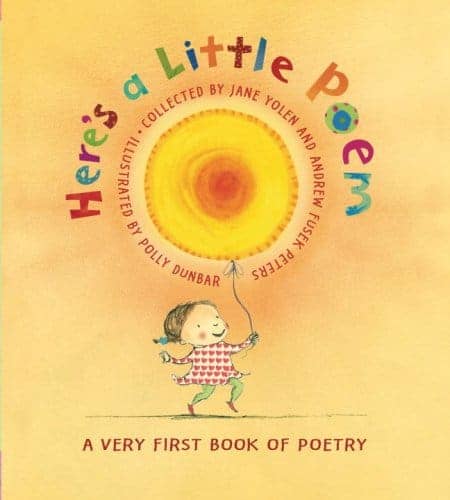
Here’s a Little Poem collected by Jane Yolen, illustrated by Polly Dunbar
Start your kids early with these 60 short poems about and for toddlers.
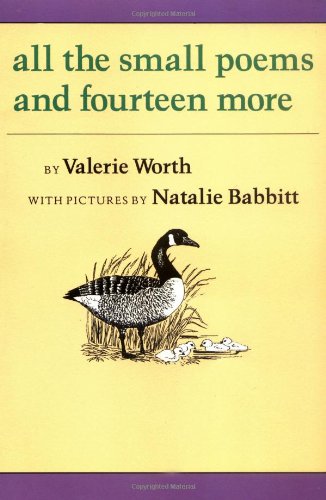
All the Small Poems and Fourteen More by Valerie Worth, illustrated by Natalie Babbitt
These poems exemplify how poets use minimal words to SHOW, not tell!
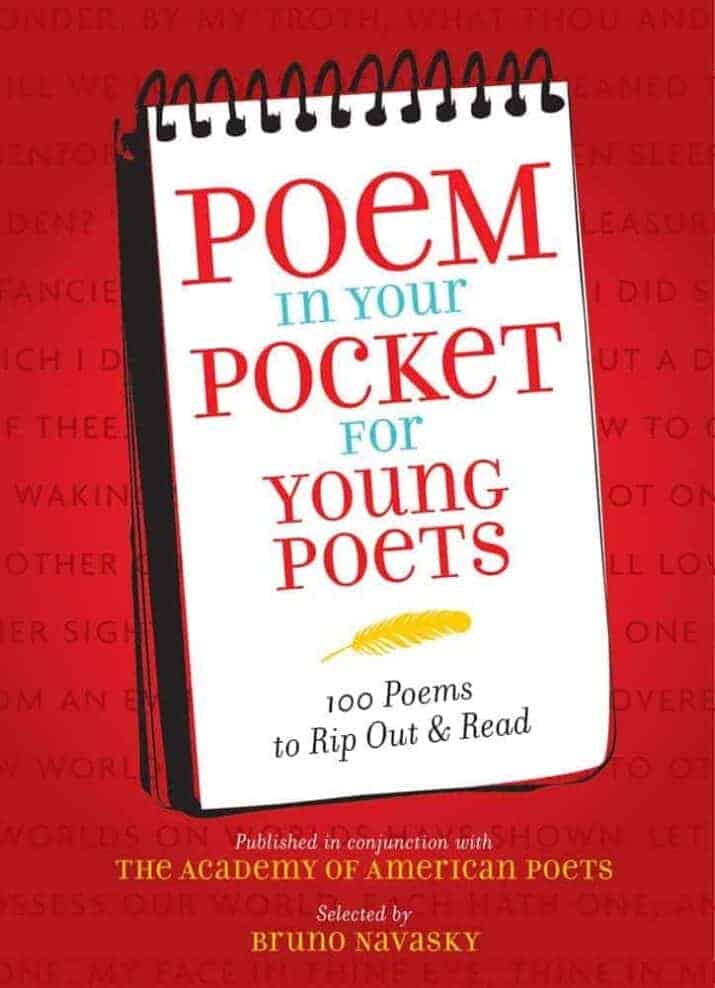
Poem In Your Pocket For Young Poets edited by Bruno Navasky
The poems for kids in this book include selections from both male and female poets, many of them I’m hadn’t read before. Because the poems are rich in sensory images, they’re ripe for illustration, which is a fantastic way to get kids to think deeply about the meaning of the poem.
 This Poem Is a Nest by Irene Latham, illustrated by Johanna Wright
This Poem Is a Nest by Irene Latham, illustrated by Johanna Wright
You’ll be fascinated by the beauty and playfulness of the language, imagery, and meaning in these evocative poems. The poet begins with longer nest poems and then uses the words found in those poems to make smaller, nestling poems, also called “found poems.” Doesn’t this sound amazing? (It is!) “What Hope Is / a cup / of stars” The poems range in topics from nature to emotions to imagination.
Rhyming Poetry Books
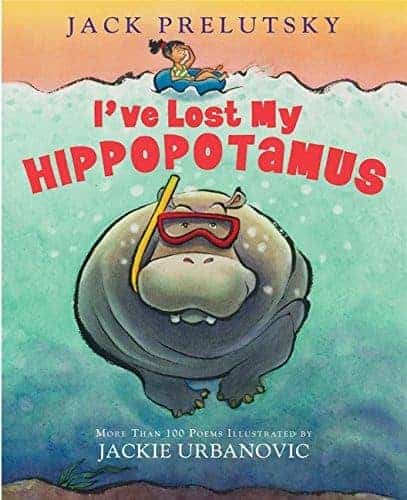
I’ve Lost My Hippopotamus by Jack Prelutsky, illustrated by Jackie Urbanovic
Kids love these hilarious poems!
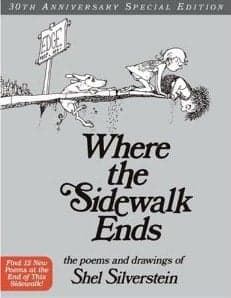
Where the Sidewalk Ends by Shel Silverstein
A must-own classic poetry book of funny, memorable poems.
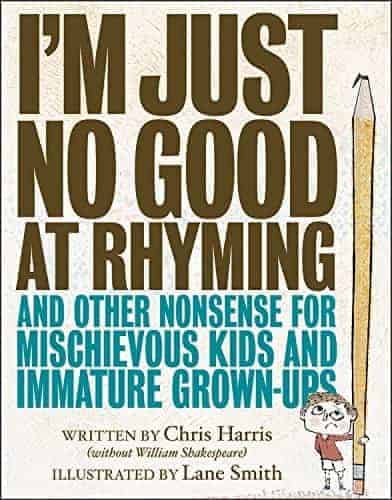 I’m No Good at Rhyming and Other Nonsense for Mischievous Kids and Immature Grown-Ups by Chris Harris, illustrated by Lane Smith
I’m No Good at Rhyming and Other Nonsense for Mischievous Kids and Immature Grown-Ups by Chris Harris, illustrated by Lane Smith
If you like to laugh, run to buy this poetry book. It’s wordplay at its silliest in the vein of Shel Silverstein with randomness that kids love (misnumbered pages and rivalry between Harris and Smith). I dare you not to laugh!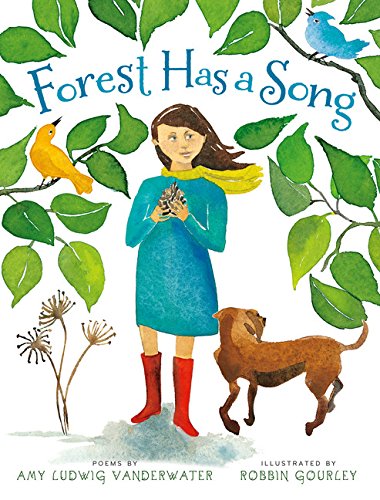 The Forest has a Song by Amy Ludwig VanDerwater, illustrated by Robbin Gourley
The Forest has a Song by Amy Ludwig VanDerwater, illustrated by Robbin Gourley
I’ve been a big fan of Amy Ludwig VanDerwater’s blog, The Poem Farm, and am thrilled with her first book!! (Download activities here.)
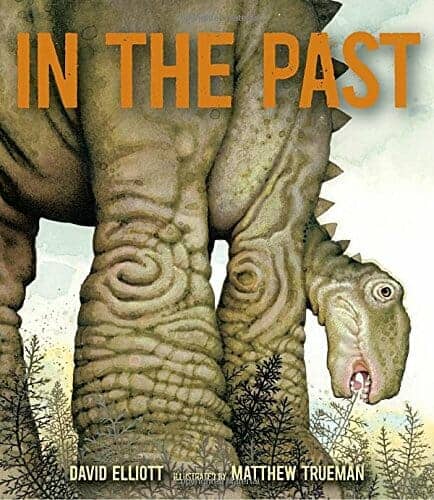
In the Past: From Trilobites to Dinosaurs to Mammoths in More Than 500 Million Years by David Elliott, illustrated by Matthew Trueman
Aptly oversized to reflect many of the gigantic creatures within, this book of poems with gorgeous illustrations celebrates prehistoric creatures. Creatures like the weird-looking dunkleosteus or terrifying yutyrannus. Some of these creatures you’ll know, but many will be new. The text is very accessible. Each creature includes its scientific name plus the geologic timeline in which it lived. SO cool, right?
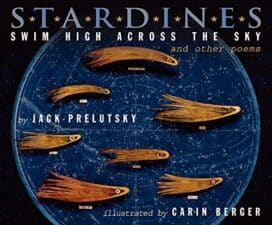 Stardines Swim High Across the Sky and other Poems by Jack Prelutsky, illustrated by Carin Berger
Stardines Swim High Across the Sky and other Poems by Jack Prelutsky, illustrated by Carin Berger
Carin Berger illustrated these poems with fantastical wild collages, dioramas, and found objects! Her illustration and page design should win awards — it’s wonderful. They pair perfectly with Prelutsky’s original creatures–magpipes, tattlesnakes, braindeers, and stardines, to name a few. I love Stardines for a bedtime poem . . .
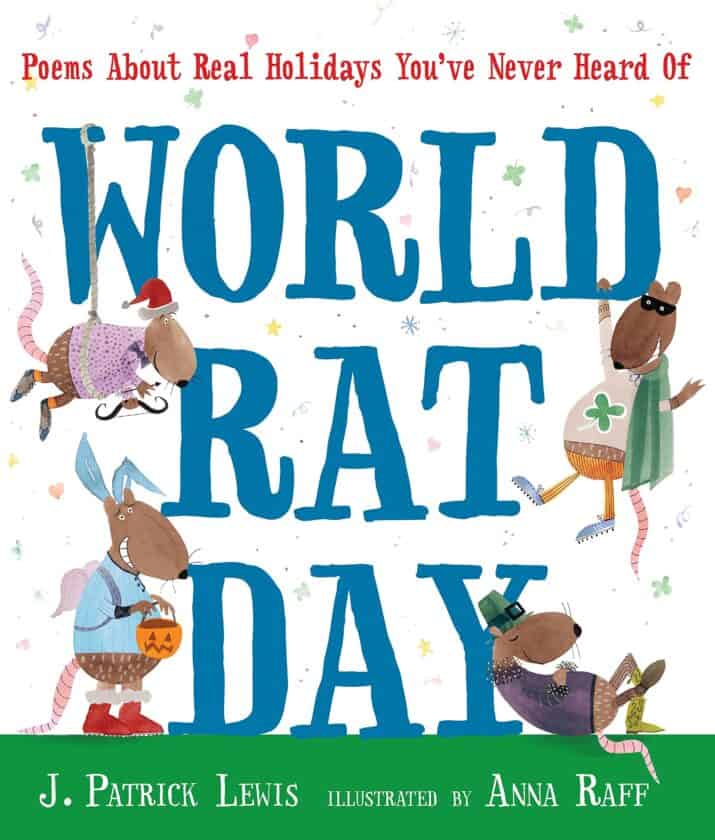 World Rat Day: Poems About Real Holidays You’ve Never Heard Of by J. Patrick Lewis, illustrated by Anna Raff
World Rat Day: Poems About Real Holidays You’ve Never Heard Of by J. Patrick Lewis, illustrated by Anna Raff
You’d be right if you looked at the title and thought these poems would be witty delights. They are! March 15 is Worm Day. (In case you didn’t know.) Get ready for silly poems for kids with this batch of holidays!
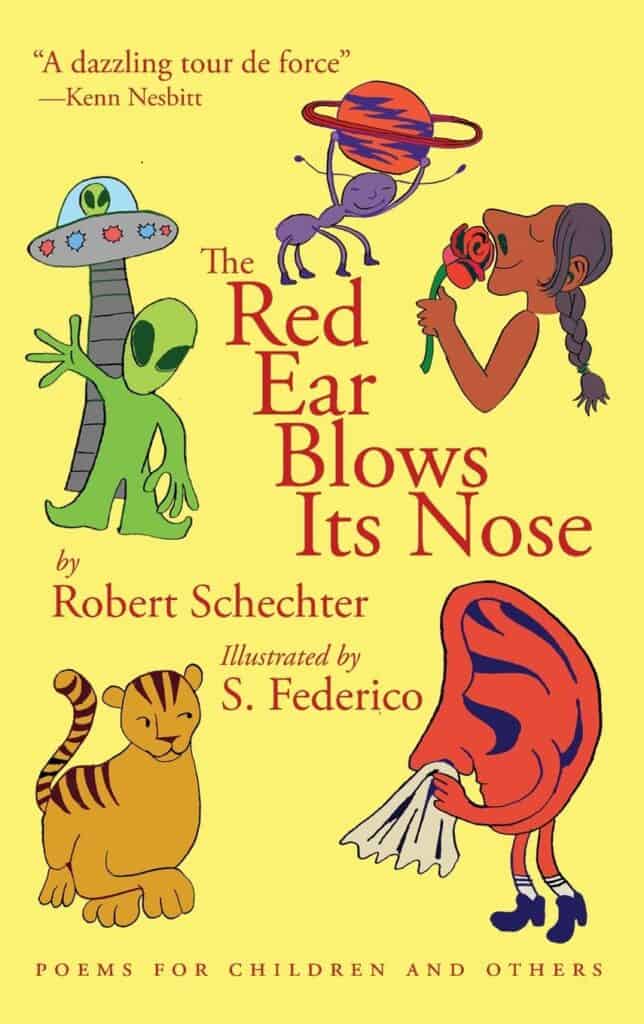
The Red Ear Blows Its Nose by Robert Schechter, illustrated by S. Federico
Silly, fun poems about various topics like winter, dogs, aliens, popcorn, imagination, and more with pen and ink illustrations. Read a tongue-twister poem, “A chorus of Doris,” or a reflection on words in “I’m Igserious!” You’ll love this book if you like whimsical, rhyming poetry that makes you laugh.
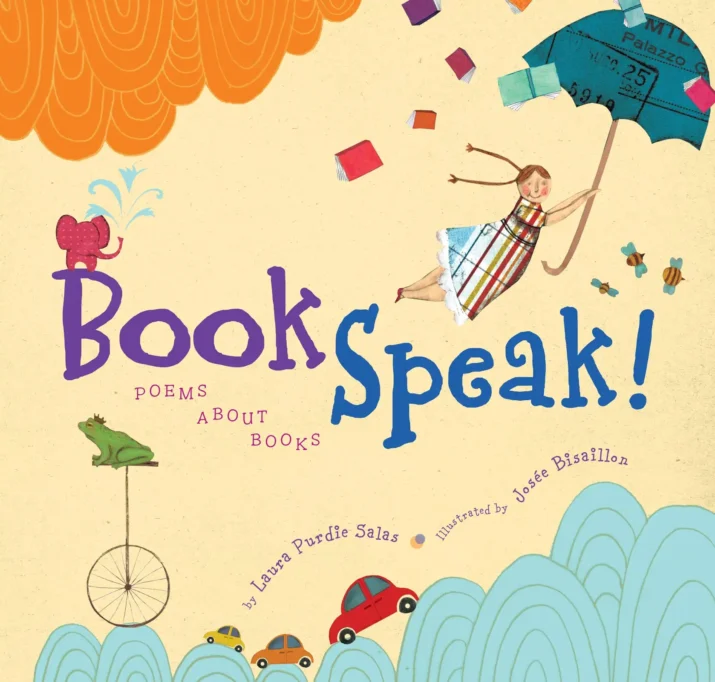
Book Speak! Poems About Books by Laura Purdie Salas, illustrated by Josee Bisaillon
I love this poetry book! Salas writes 21 fun, funny, delightful poems about books — from the perspective of a character, or what happens in the bookstore at night, or how the book sees the reader (“the sky is falling”) or the journal inviting the writer to “describe your desires.”
Free Verse Poems for Kids
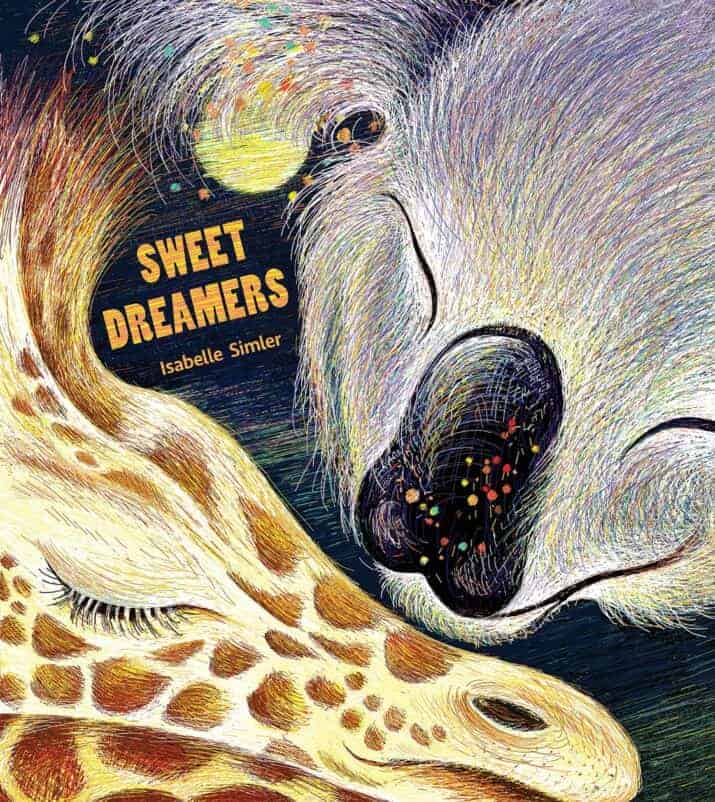
Sweet Dreamers by Isabelle Simler
Each evocative poem captures an animal sleeping and dreaming, giving us imagery that transports us to those sleepy moments. “The hedgehog dreams safely in his shelter. Under a pile of leaves, his spiky coat, he’s rolled up, wrapped up for a long rest.” The illustrations have so much movement — neon, black, white, red, and green with lots of lines. It’s fascinating to see the humpback whale sleeping underwater “the humpback whale dreams vertically with plankton at every level.“
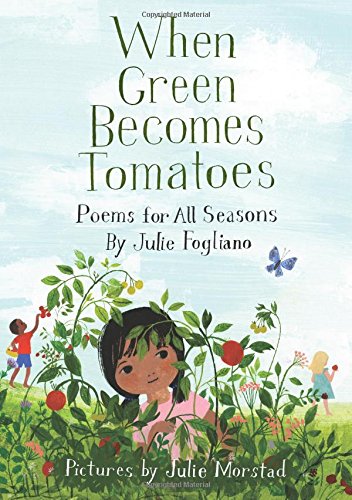 When Green Becomes Tomatoes Poems for All Seasons by Julie Fogliano, illustrated by Julie Morstad
When Green Becomes Tomatoes Poems for All Seasons by Julie Fogliano, illustrated by Julie Morstad
Beautifully written and illustrated, these poems for kids capture the beauty of each season in relatable verses that seem like magic just like the poem below describing the first snow.
december 29 and i woke to a morning that was quiet and white the first snow (just like magic) came on tip toes overnight
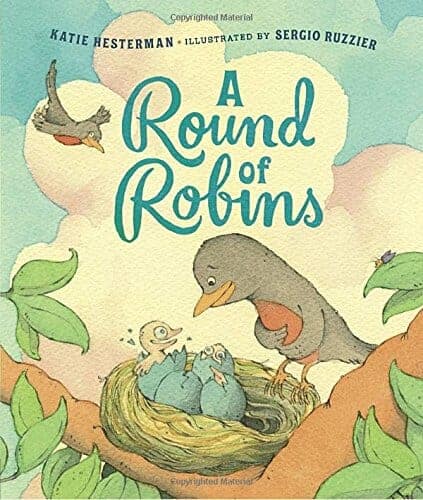
A Round of Robins by Katie Hesterman, illustrated by Sergio Ruzzier
The artwork captures the essence of the poetic text, in this case, the life of robins. The robin parents build a nest, guard their eggs, and raise their baby birds to be independent. The rhyming poems are joyful, playful, and fun to read out loud. Teachers, you’ll love using these poems in your writing workshop. Vibrant action verbs capture the lives of this bird family, “Jumble, jostle, rumble, squirm” or “Wiggle, ship / Squiggle, slip.”
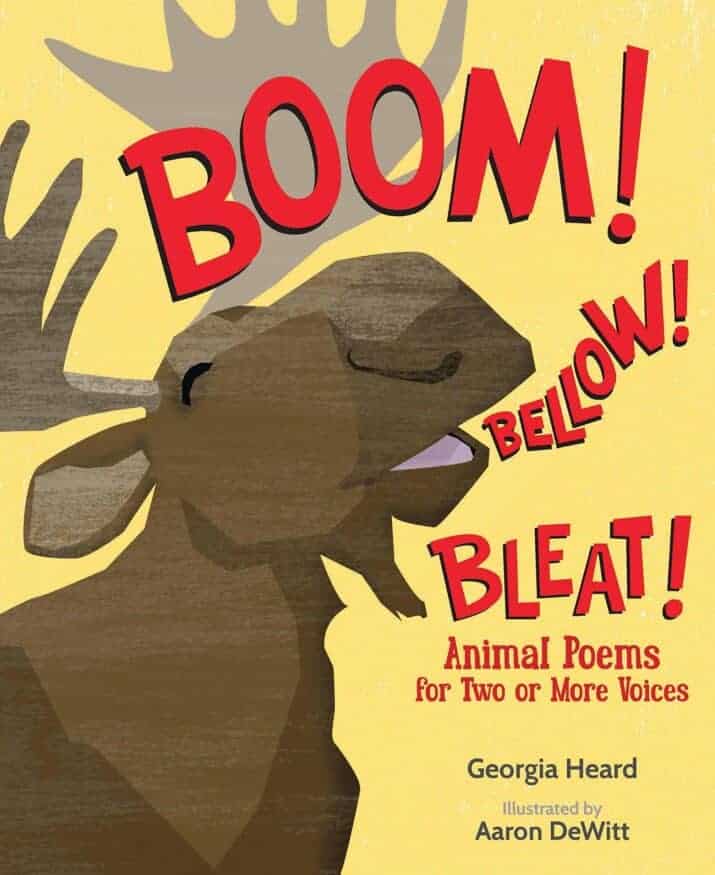
Boom! Bellow! Bleat! Animal Poems for Two or More Voices by Georgia Heard, illustrated by Aaron DeWitt
This is a MUST-OWN book for teachers, school libraries, homeschoolers, and poetry-loving parents. It captures the most interesting sounds of nature. One child reads the animal name text written in black text. The other child reads that animal’s sounds written in red text. (“Kangaroos / Chortle“) The book is filled with the noise of fish, geese, frogs, mockingbirds, snakes, bees, and many more animals.
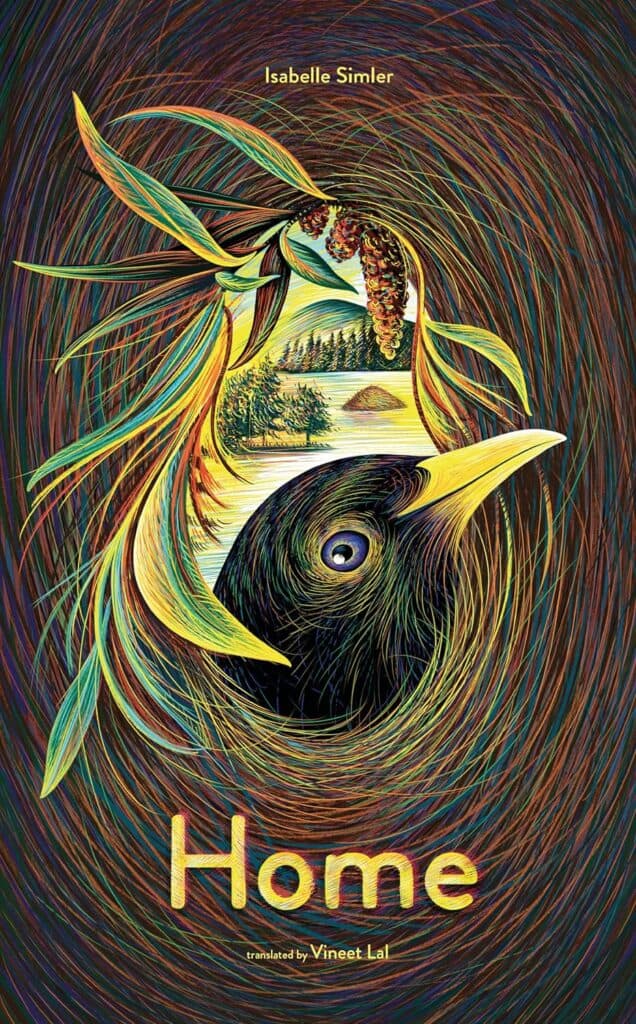
Home written and illustrated by Isabelle Simler, translated by Vineet Lal
This nature poetry book dazzles with its beautiful illustrations and first-person POV poems from the viewpoint of an ant, a bird, a spider, a marmot, and more. I love that these poems are in first person. Use them to learn about nature and write your own first-person poems!
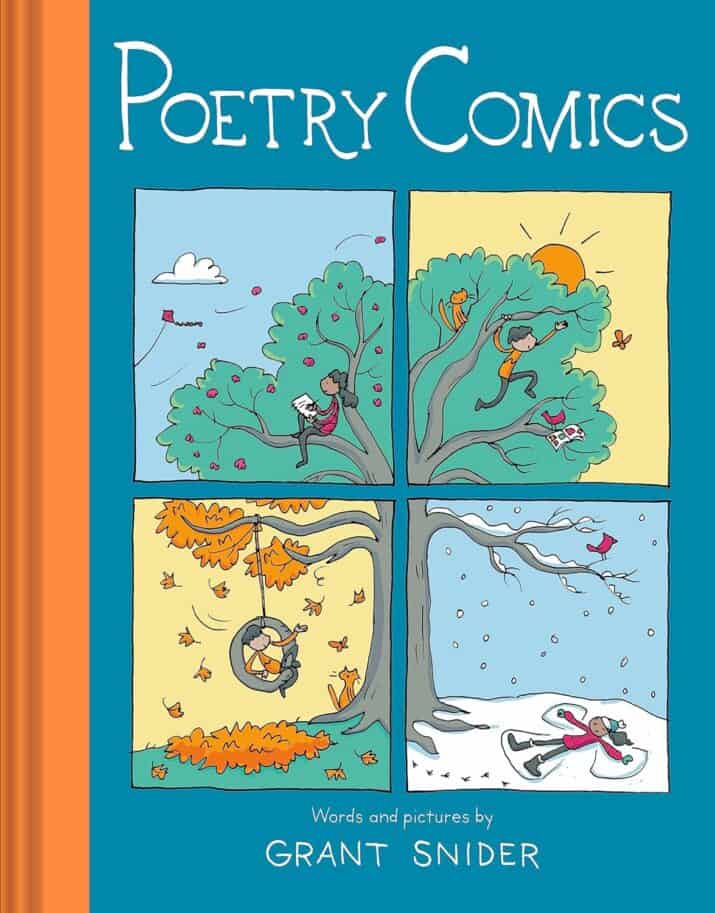
Poetry Comics written and illustrated by Grant Snider
Starting with spring, a girl shares her feelings of fresh possibilities — if she were a tree, thoughts on an empty lot, balloons, and tadpoles, and other topics. For summer, she ponders her inner life, other oceans, best friends, and more. Each season is captured in short poems which are illustrated in comic panels. Readers will be able to flip through this poetry book and read the poems that grab their attention.

Read! Read! Read! by Amy Ludwig VanDerwater, illustrated by Ryan O’Rourke
The poet celebrates a child’s life filled with reading and I love every single poem! “A book gives you a double life. / It builds a treehouse in your head / a haven you can climb to / when you wish to get away.” The poems show kids reading while eating and at school, they show readers transported and affected by stories, and they show readers researching and remembering. “And as I chew I read. / And as I read I chew.“
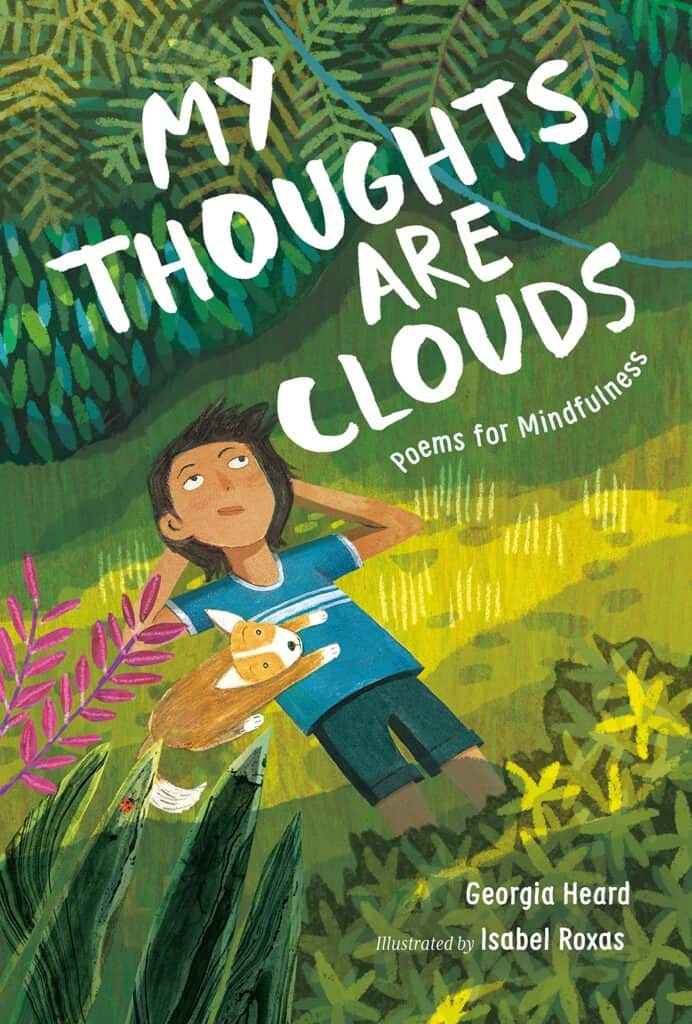 My Thoughts Are Clouds: Poems on Mindfulness by Georgia Heard, illustrated by Isabel Roxas
My Thoughts Are Clouds: Poems on Mindfulness by Georgia Heard, illustrated by Isabel Roxas
Simple poems make the basics of mindfulness understandable to children, from breathing to understanding thoughts and feelings, and being in the present moment. I love that these poems could be used as short meditations. But I also love that it reminds us busy adults to slow down, breathe, and notice the world around us. Use the poems to teach poetry writing craft, like line breaks, sensory images, and precise word choice.
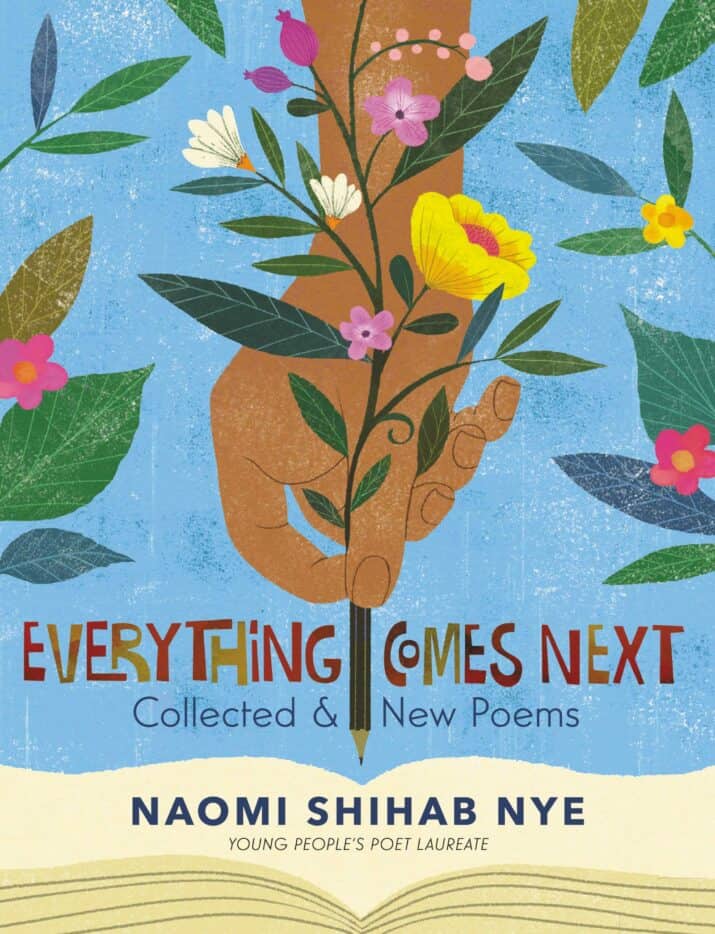 Everything Comes Next: Collected and New Poems by Naomi Shihab Nye
Everything Comes Next: Collected and New Poems by Naomi Shihab Nye
Naomi Shihab Nye is one of my favorite poets, and I have sticky notes marking my favorites in this poetry collection book. This collection of poems is about diverse topics, including war, fear, identity, kindness, Arabic life, and much more, including some familiar favorites like “Valentine for Ernest Mann” and “Famous,” as well as several new poems. Add this to your bookshelf, classroom libraries, and libraries!
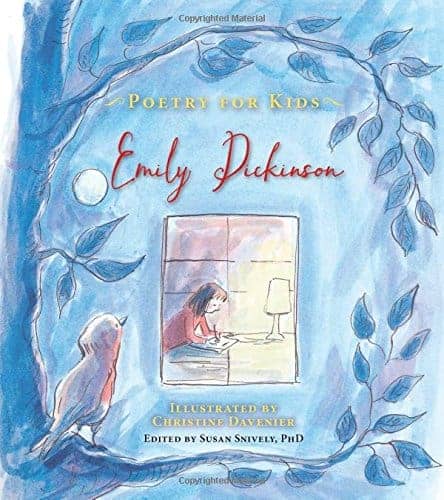 Poetry for Kids Emily Dickinson edited by Susan Snively, PhD, illustrated by Christine Davenier
Poetry for Kids Emily Dickinson edited by Susan Snively, PhD, illustrated by Christine Davenier
I’m already a HUGE Emily Dickinson fan, so the poem selection is wonderful. But, what sets this book apart are the whimsical illustrations. They bring the poems to life! Especially for children.

Stopping by Woods on a Snowy Evening by Robert Frost, illustrated by P.J. Lynch
Gorgeous wintery atmospheric illustrations illuminate the beauty of Robert Frost’s poem with exquisite detail. A girl and her horse journey through the snowy woods. She stops to take in the beauty of the frozen lake and dark woods. Her horse shakes his bells as if to question why she’s not stopping at a farmhouse. She returns to continue her journey of miles to go before she can sleep.
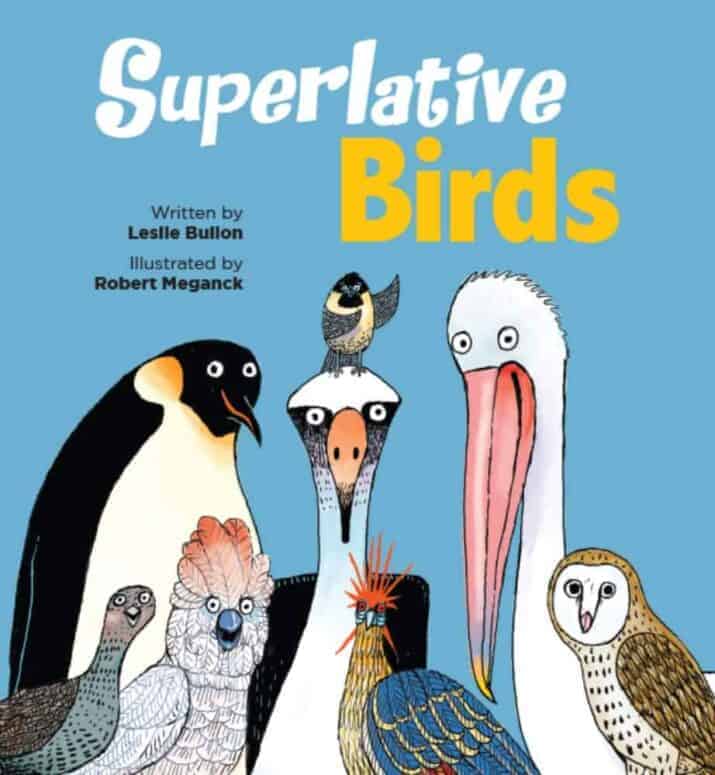
Superlative Birds by Leslie Bulion, illustrated by Robert Meganck
Look at the illustration, then read the lovely poem and science notes about each of the different birds. Birds that walk on water like the jacana marsh bird from Mexico or the peregrine falcon whose “bold spirit embodies the shape of speed.” This book will be a worthy addition if you’re studying nature, birds, or poetry.
Poetic Forms
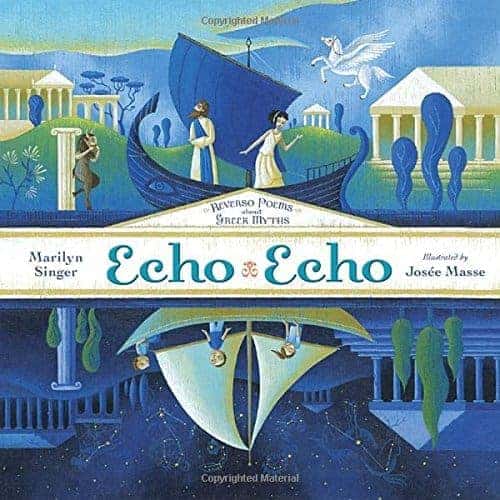 Echo & Echo by Marilyn Singer, illustrated by Josee Massee Marilyn
Echo & Echo by Marilyn Singer, illustrated by Josee Massee Marilyn
Singer skillfully writes the most amazing, want-to-read-again, reverso poems about Greek myths. Reverso poems are poems that are flipped upside down, more or less, and still make sense! I especially love the “Pandora and the Box” and “King Midas and His Daughter” poems. All the poems are beautifully illustrated, too. This is a must-own poetry book for classrooms and homes.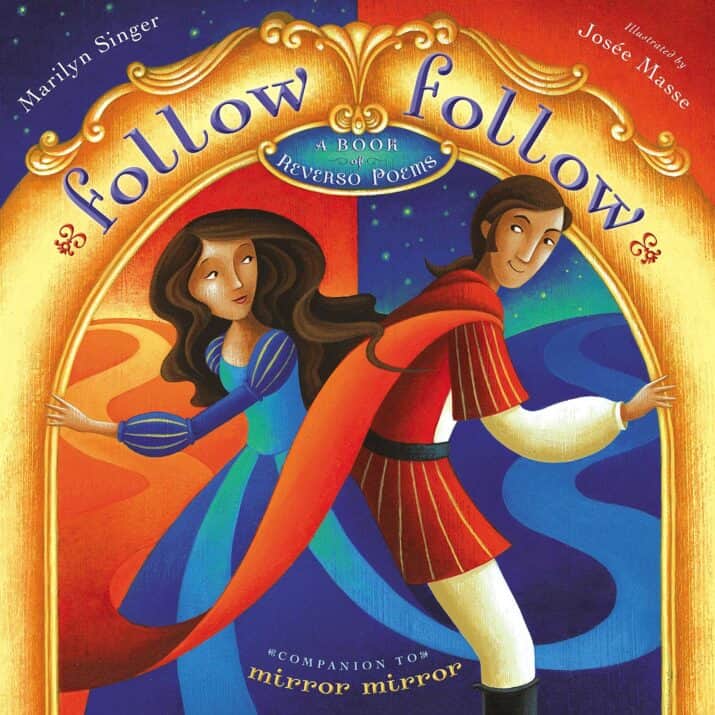 Follow Follow A Book of Reverso Poems by Marilyn Singer, illustrated by Josee Masse
Follow Follow A Book of Reverso Poems by Marilyn Singer, illustrated by Josee Masse
Here are fairy tale reversos, or poems meant to be read from top to bottom as well as from bottom to top. (Why they’re called “reversos”.) They’re fun, make you think, and surely will inspire many writers to try their own reversos.
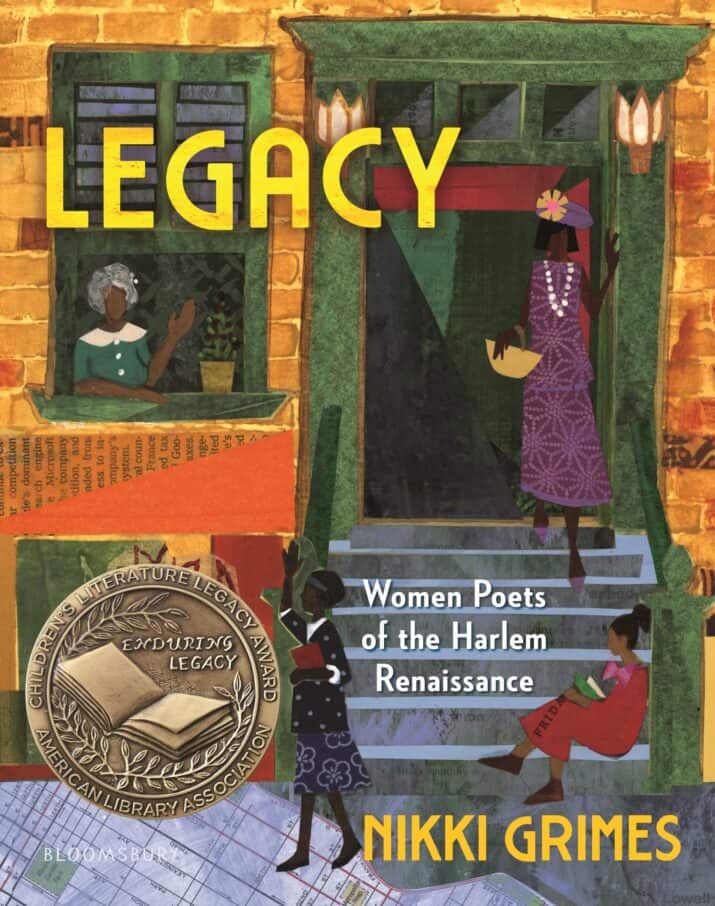
Legacy: Women Poets of the Harlem Renaissance by Nikki Grimes (ages 10+)
Stunning artwork and profoundly powerful poems share meaningful musings and lessons about being a girl turning into a woman, being Black, nature, and identity–among other topics. Grimes shares poems from Harlem Renaissance writers and then uses them to write her own The Golden Shovel poems, using words from the original poems in her new poems, each line ending with one of the words from the original poem.

One Last Word by Nikki Grimes
Teachers, use this book to teach the “Golden Shovel” poetic form in your classroom. It’s SO creative. And the poems in this small book are stunning.

A Kick in the Head: An Everyday Guide to Poetic Forms compiled by Paul B. Janeczko, illustrated by Chris Raschka
This playful poetry book introduces 29 poetic forms, including song, story, statement, question, and haiku.
Haiku Poetry Books
Find the best children’s books with haiku poems.
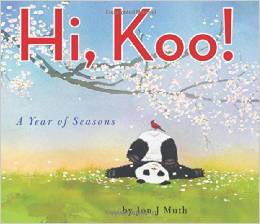
Hi, Koo! by Jon Muth
Stillwater’s nephew explores the seasons captured in snapshot haikus. Muth explains, “. . . haiku is like an instant captured in words — using sensory images.” If you read closely, you’ll see that the 26 poems follow the alphabet. Beautiful. Does this make you want to go outside?
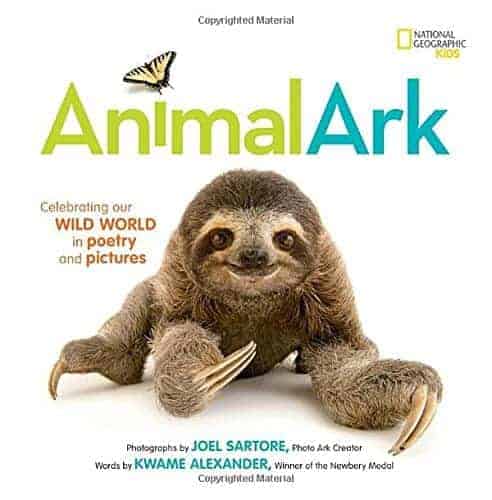 Animal Ark Celebrating Our Wild World in Poetry and Pictures by Kwame Alexander, photos by Joel Sartore
Animal Ark Celebrating Our Wild World in Poetry and Pictures by Kwame Alexander, photos by Joel Sartore
Alexander writes about each animal or animal grouping in evocative haikus with jaw-dropping photographs taken by Joel Sartore. For a dramatically angled fruit bat on a black background, Alexnder writes “wings like a cape / ready for flight / into the sweet, dark night” then later “a hundred feet / walking without a sound / one direction” is the text describing a gigantic 2-page photograph of an Asian millipede. Teachers, can you imagine using the photos as writing prompts for students’ own haikus?
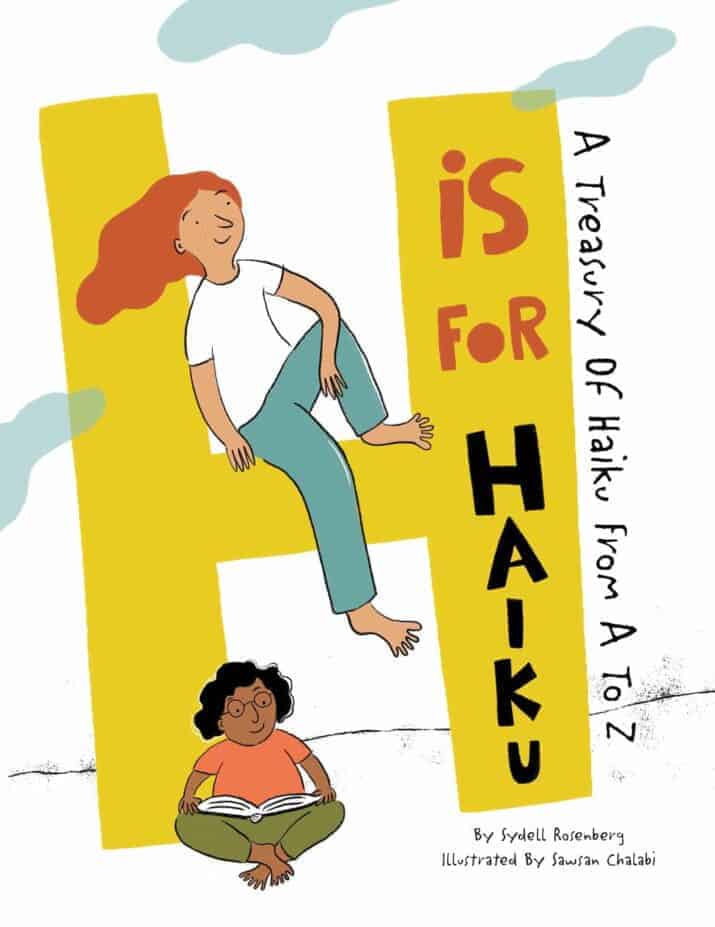
H is for Haiku by Sydell Rosenberg, illustrated by Sawsan Chalabi
Rosenberg’s topics celebrate the little moments in life in New York City. Moments like wrinkled leaves in a puddle, children carrying umbrellas, or squirrels munching on acorns. These haiku poems show that poems can be about anything. Use these to celebrate life’s small events.
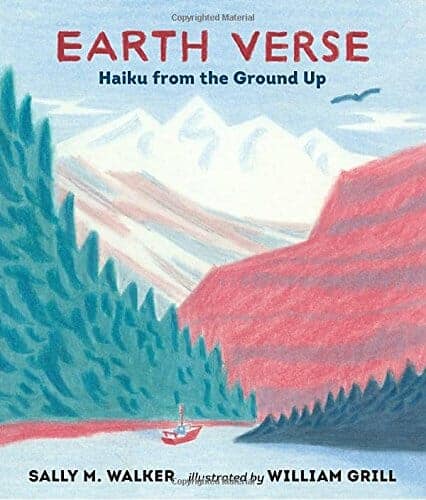
Earth Verse Haiku from the Ground Up by Sally M. Walker, illustrated by William Grill
Science teachers looking to integrate literacy into their curriculum use this book as a model to write haiku poems about the Earth!! “hold fast, stalactite, / everlasting icicle, / stone bed for a bat” I think it’s interesting to see what words and descriptions the poet used for each topic. Because haiku is limited, the choices must be deliberate and well thought out.
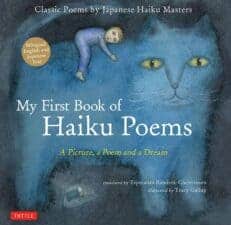
My First Book of Haiku Poems: A Picture, a Poem and a Dream by Japanese Haiku Masters, translated by Esperanza Ramirez-Christensen, illustrated by Tracy Gallup
I love everything about this book: the stunning haikus about nature, the luminous illustrations, and the deep-thinking food-for-thought notes. Are you a fan of haiku yet? These are poems from the masters — I’m talking about Basho and Shiki and more. Run out to buy this — it’s an essential addition to your home and classroom libraries. It’s SO impressive!
Just being alive,
the poppy flower
and I.
–Issa
 Guess Who, Haiku by Deanna Caswell, illustrated by Bob Shea
Guess Who, Haiku by Deanna Caswell, illustrated by Bob Shea
What a creative twist! The traditional nature haikus become clever riddles for readers to guess the answers.
“from a lily pad
keep eyes spy a careless fly
a sticky tongue — SNAP!
Can you guess who from her haiku?”
Collections of Poetry for Kids
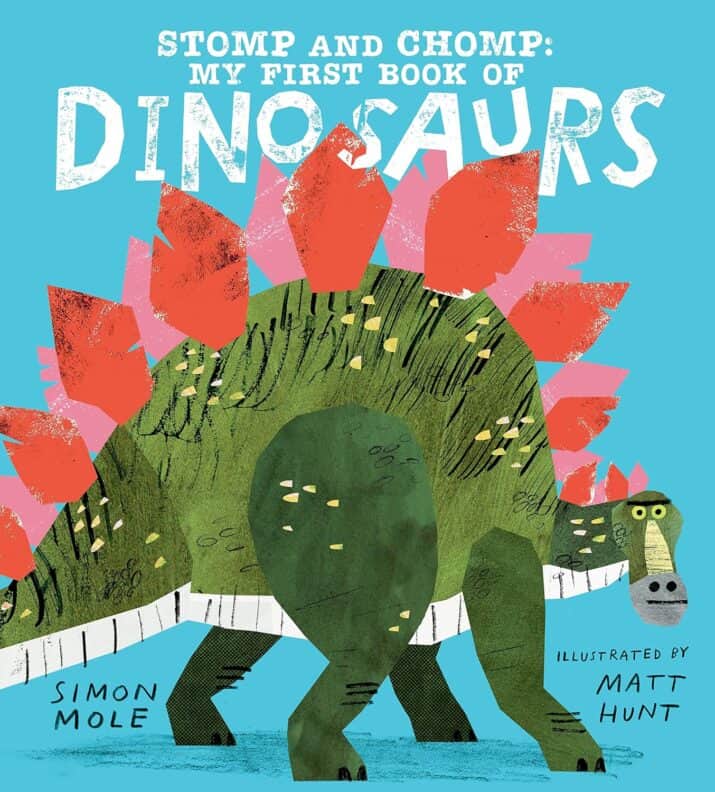
Stomp and Chomp: My First Book of Dinosaurs written by Simon Mole, illustrated by Matt Hunt
Read aloud these cheeky, fun dinosaur poems with brightly colored, oversized illustrations. For example, the “Therizinosaurus! A Recipe” poem about cooking this dangerous creature ends with the line– “A Cretaceous specialty best served with caution.” The poem “Dinosaur Droppings” says, “Not all dinosaur dung is enormous: some dinos drop plops as small as a tiny pea.” Yes, this is unlike any other dinosaur book you’ve ever read! And your kids will love it. (And what a great way to introduce children to poetry.)
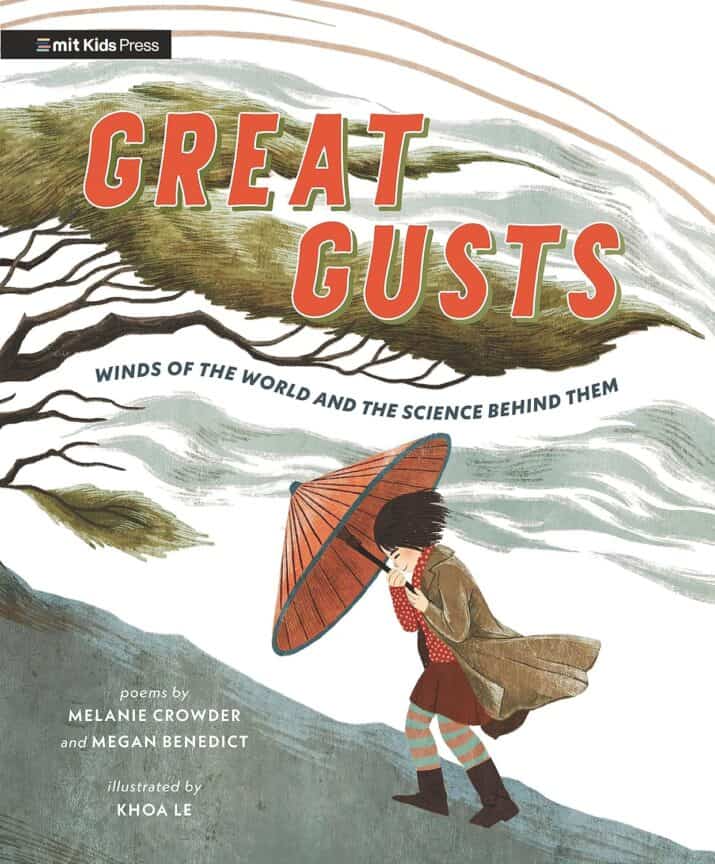
Great Gusts Winds of the World and the Science Behind Them written by Melanie Crowder and Megan Benedict, illustrated by Khoa Le
The authors write poems and informational text about different kinds of wind; winds like Bull’s-Eye Squalls, Papagayo Jet or gap wind, and Sumatra Squall. They introduce readers to 14 types of winds around the world. The artwork is appropriately dynamic and movement-filled. The poems are lovely.
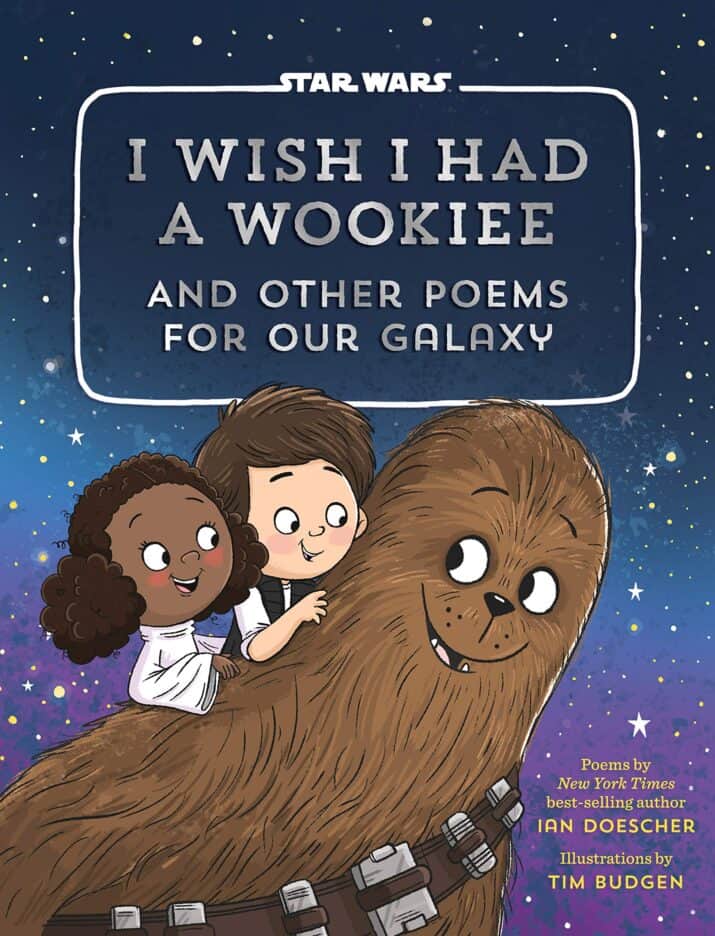
I Wish I Had a Wookie and Other Poems for Our Galaxy by Ian Doescher, illustrated by Tim Budgen
So cute and fun, this poetry collection will delight Star Wars fans with poems about kids and their relationship with Star Wars. I honestly adore these poems — and there are SO many to read. For example, “Counting Jawas” is a new take on the counting sheep bedtime ritual. “My Room’s the Millennium Falcon” shares how much the boy loves his room and imagines adventures there as if he’s flying in the Millennium Falcon.
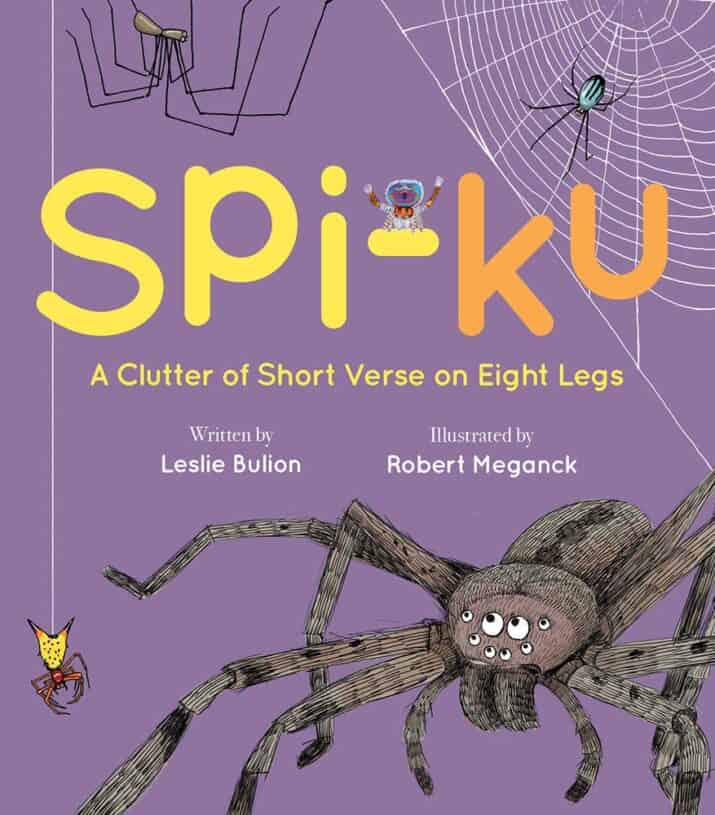
Spi-Ku: A Clutter of Short Verse on Eight Legs bt Leslie Bullion, illustrated by Robert Meganck
Rich imagery and playful language fill this engaging book of spider-themed poems of all kinds accompanied by informational text and illustrations. Parents, read this poetry book to help your children discover a love for poems! Teachers, whatever poetry form or literary devices you’re teaching, you’ll find beautiful examples in this poetry collection book.

For Every Little Thing Poems and Prayers to Celebrate the Day poems selected by June Cotner and Nancy Tupper Ling, illustrated by Helen Cann
I adore this faith-filled poetry book of gratitude filled with prayers, poems, and blessings. The poems begin in the morning and then move towards the night with blessings, kindness, the world, family, and friends in between. These are poems for kids that you’ll cherish because they’re sweet reminders about the simple joys of daily life and our connection with God.
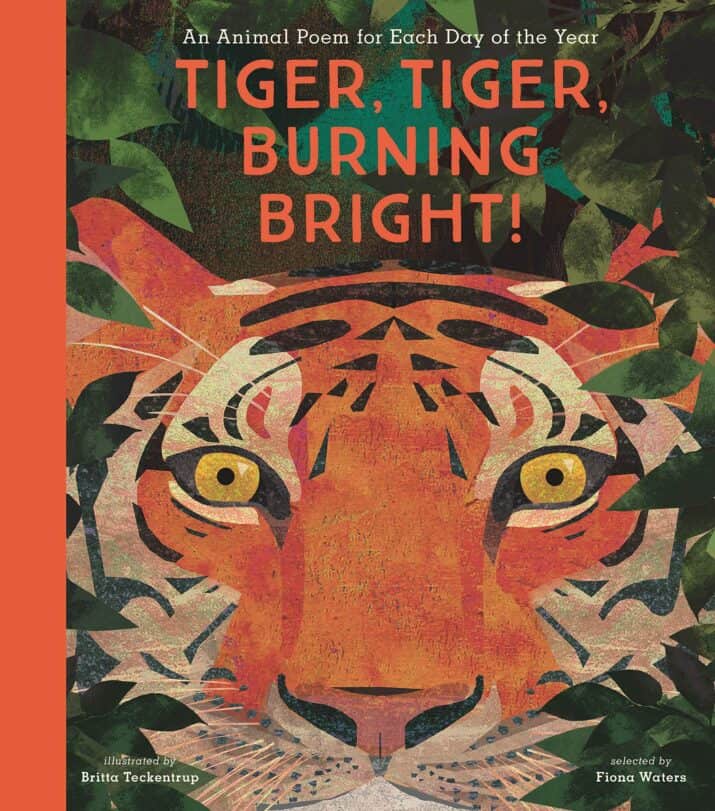
Tiger, Tiger Burning Bright: An Animal Poem for Each Day of the Year by Fiona Waters, illustrated by Britta Teckentrup
This is a hefty and impressive poetry book of kid-friendly poetry with earthy illustrations and poems for each day of the year!
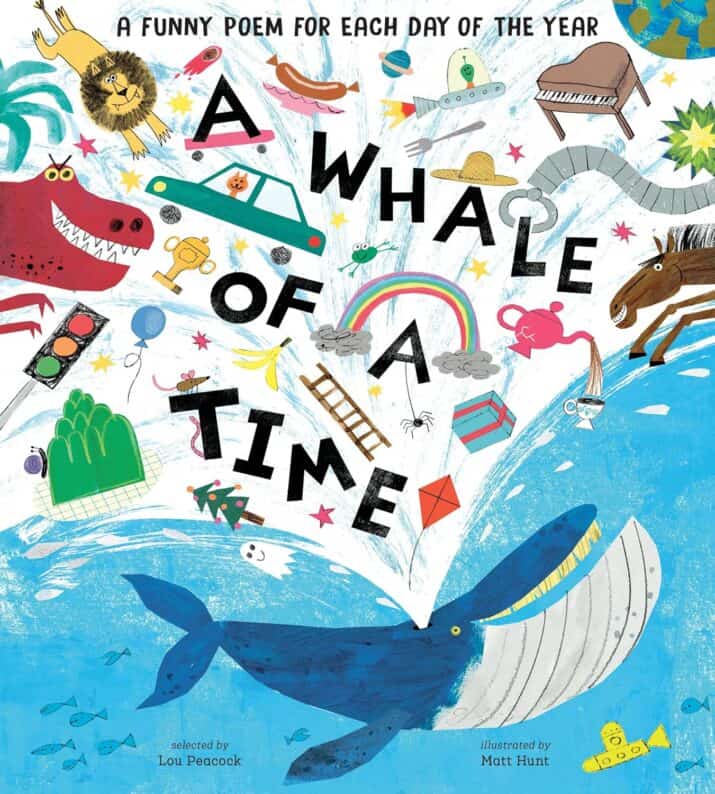
A Whale of a Time: A Funny Poem for Each Day of the Year selected by Lou Peacock, illustrated by Matt Hunt
Kudos to the illustrator, Matt Hunt, for the incredible design and illustrations that make this gigantic (and very heavy) poetry book fun to look at. And congratulations to Lou Peacock, who accomplished the task of finding 365 funny poems! I didn’t read them all, but what I did read was spot on — with silly poems from so many amazing poets, including Jack Prelutky, Eloise Greenfield, Linda Sue Park, Nikki Grimes, and Jane Yolen.
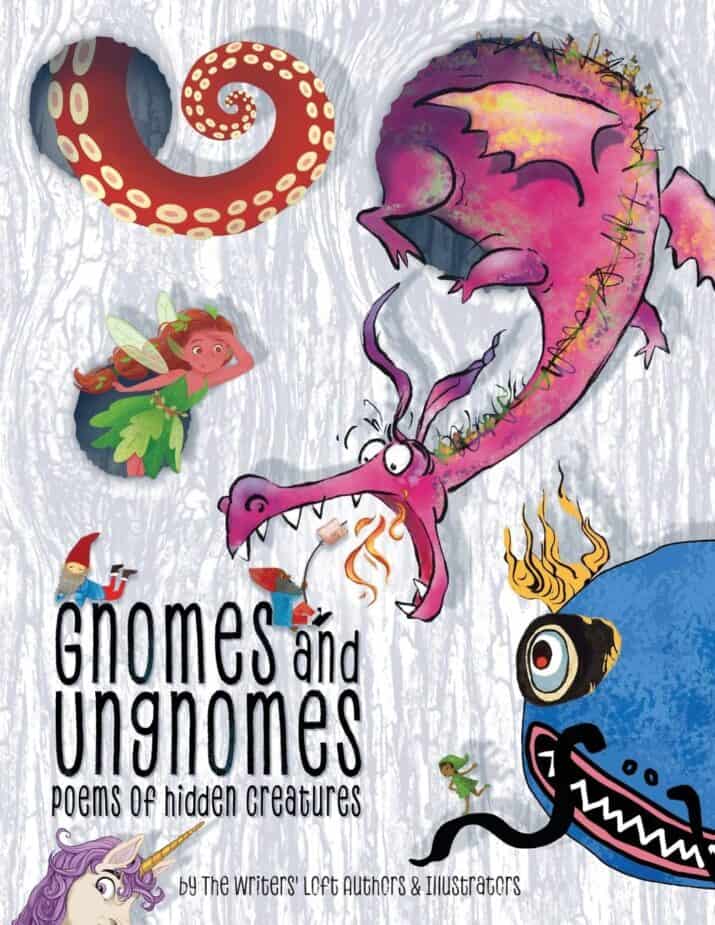
Gnomes and Ungnomes: Poems of Hidden Creatures by various
Want to know more mythical creatures beyond a unicorn and a fairy? Then, this beautifully illustrated book of 100 poems is for you! Watch the Kukulkan paint the clouds with a feathered tail. Consider the perfection of the Navagunjar, a creature with nine parts. And, of course, read about familiar favorites like Nessie, Leprechauns, a Phoenix, or a Troll. These are whimsical and playful poems of many different types (free verse, haiku, sonnet, etc.) from many incredible children’s literature authors including my friends Nancy Tupper Ling, Josh Funk, and Mia Wenjen.

Poetry Speaks to Children with a CD of poems read by the poets, edited by Elise Paschen, illustrated by Judy Love, Wendy Rasmussen, and Paula Zinngrabe Wendland
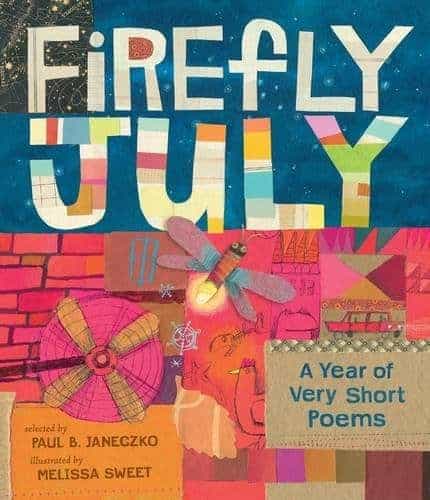
Firefly July edited by Paul B. Janeczko, illustrated by Melissa Sweet
GORGEOUS illustrations and compelling poems — these poems are beautiful and SHORT.
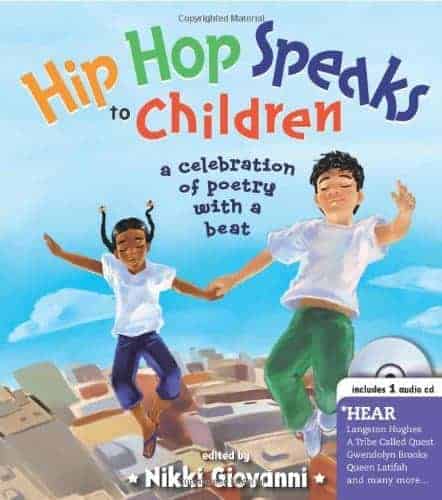
Hip Hop Speaks to Children: A Celebration of Poetry with a Beat edited by Nikki Giovanni with a CD!!

Here’s a Little Poem A Very First Book of Poetry edited by Jane Yolen and Andrew Fusek Peters, illustrated by Polly Dunbar
These 60+ poems for kids are top-notch making this a must-own poetry book for young children.
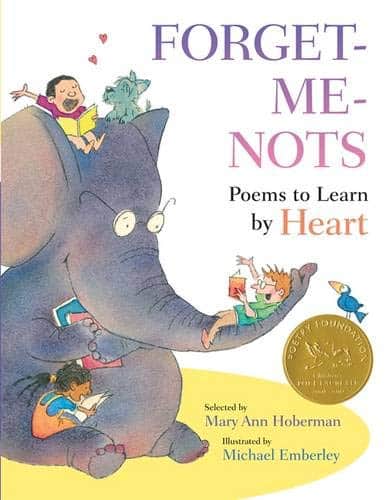
Forget-Me-Nots: Poems to Learn By Heart by Mary Ann Hoberman (former Children’s Poet Laureate,) illustrated by Michael Emberley
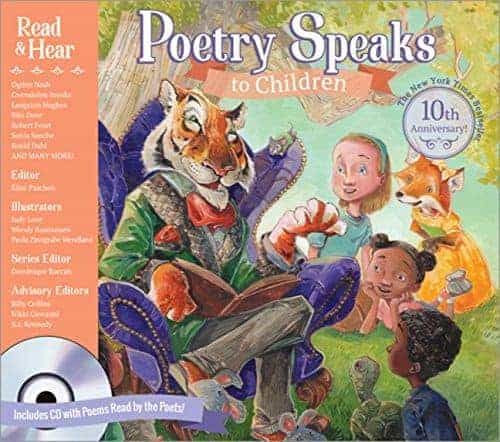
Poetry Speaks to Children (Book & CD) edited by Elise Paschen and Dominique Raccah, Illustrated by Judy Love and Paula Zinngrabe Wendland
Poetry Workbooks and Teacher Guides

Kwame Alexander’s Free Write: A Poetry Notebook (Ghostwriter) by Kwame Alexander
This fun-to-read workbook for ages 8 to 12 introduces writers to poetry, literary devices like metaphors, as well as other poetic techniques. Written in Alexander’s signature voice and style, kids will get hooked as they dive into poetry. Alexander provides example poems with fill-in-the-blanks and lots of spaces for free writes. Throughout the book, poets will also find inspirational quotes from other authors.
 Here We Go: A Poetry Friday Power Book by Sylvia Vardell and Janet Wong
Here We Go: A Poetry Friday Power Book by Sylvia Vardell and Janet Wong
I love the structure of this book for inspiring and instructing young poets. Each section begins with a mentor poem, then shares different characters’ response poems and related activities for writers to do independently. The mentor poems are high-quality, deeply relatable, and accessible to children. The book concludes with a helpful resource guide at the back, including performance tips, where to publish, and other resources. Highly recommended.
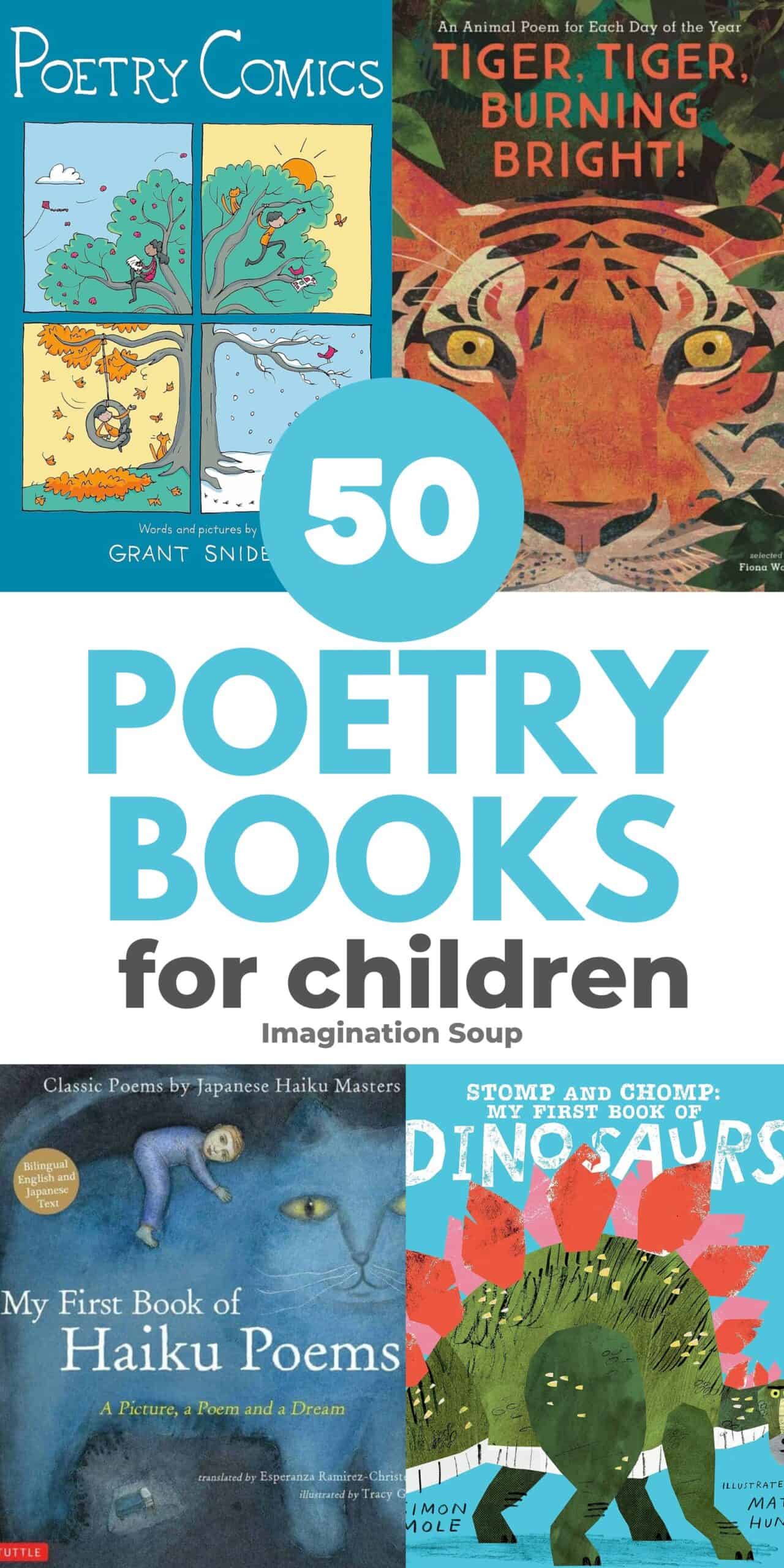
KEEP READING

